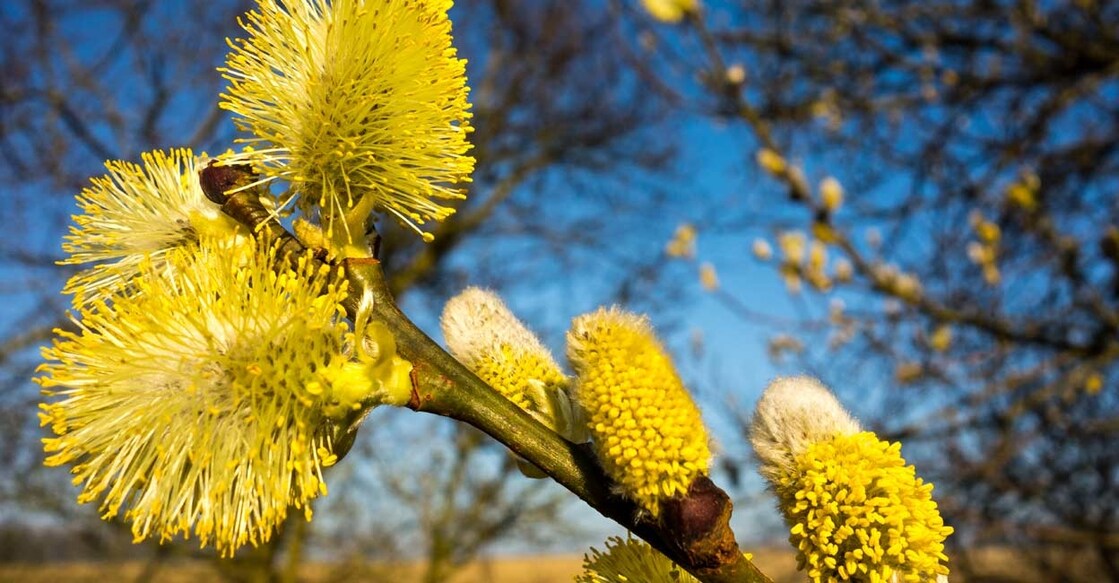Climate change: Catkins flowering at different times threatening their pollination

Mail This Article
Ormskirk, England: As the days grow longer and the air warms up, nature is bursting back to life. Even before their leaves return, trees produce delicate, fuzzy structures known as catkins. These tiny, downy threads, often described as kitten tails (thanks to a fun translation from Dutch to English back in 1578), herald the arrival of spring.
As for timing though, it's a bit like a botanical ballet. Depending on the species and the year's environmental conditions, catkins dance to their own beat. Hazels might kick off the floral festivities between January and March, while oaks take their turn between mid-April and May.
The global climate has been changing since the industrial era. Summers are getting warmer, rainfall patterns are fluctuating and extreme weather events will continue to get more frequent. Seasons are beginning to shift.
These changes in temperature and rainfall patterns can play a significant role in shaping the life cycle of trees and will affect the emergence of catkins. In the European Alps, scientists discovered that even minor temperature shifts of just 2C-3C can have a major impact on the amount of pollen produced by catkins.
In regions experiencing warmer temperatures, trees may start producing catkins earlier in the year. This premature blooming can throw a wrench into the synchronised dance between male and female catkins. Trees such as alder, hazel and birch are known as monoecious that means that both their male and female flowers grow on the same tree. Changing temperatures could result in a split in the timing of their development with male and female catkins blooming at different times.
If male catkins show up fashionably early or fashionably late compared to their female counterparts, it can throw off the whole pollination game, leading to fewer seeds being produced. This can also spell trouble for creatures that rely on catkins as a vital food source, such as the common dormouse.
Rainfall patterns influence catkin development. Trees need just the right amount of water during crucial growth stages, including when they're forming those fluffy catkins. Changes in rainfall, whether it's a drought or a sudden downpour, can throw things off-kilter, affecting the production and flowering success of catkins.
When catkins get soggy from too much rain, it puts a damper on the release of airborne spores, potentially reducing their chances of successful reproduction. So, whether it's a temperature twist or a rainfall ruckus, changing weather patterns can have far-reaching consequences.
These environmental changes affect a tree's ability to produce healthy catkins at the right time. That really matters because catkins aren't just any old fuzzy bits they're a vital part of the tree's reproductive process with fascinating biology.
Symbols of springtime
Each catkin consists of clusters of tiny flowers tightly packed together on a central stem. You've probably spotted them as the first signs of spring, adorning trees with their unique charm. These little beauties are essential players in the life cycle of many trees found in the cooler regions of the world.
Trees like alder, silver birch, hazel, oak and white willow are the stars of the catkin show. Male catkins steal the spotlight with their longer, showier appearance.
They're the pollen producers, releasing clouds of pollen into the air that sometimes trigger hayfever. Birch pollen, for instance, can range from a thousand to ten thousand grains per cubic metre, making it an airborne irritant.
Female catkins are a bit more understated. They're the quiet achievers, containing the ovules that transform into seeds once they're fertilised by pollen. While not as flashy as their male counterparts, female catkins have a crucial role receiving the pollen for fertilisation.
Aside from reproduction, catkins also make a tasty treat for some of nature's critters. Moth larvae, for example, flock to these floral feasts. Interestingly, male catkins pack a more nutritious punch, and moth larvae dining on male catkins tend to have better body mass, survival rates and reproductive success compared to those munching on female catkins.
Catkins play crucial roles within ecosystems, both in terms of their importance in tree reproduction and as food for wildlife. As climate change progresses, the impact on catkins goes beyond direct effects, potentially setting off a chain reaction affecting other species.
Monitoring the nuances of these changes is vital and you can record your local catkin sightings online on the Woodland Trust's nature's calendar. This information helps scientists like me understand more about how tree life cycles, and the wildlife that depend on them, are changing over time.

